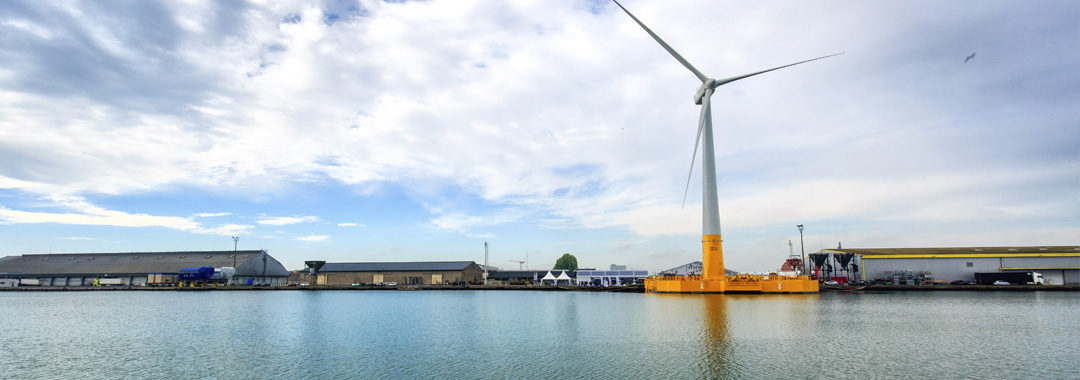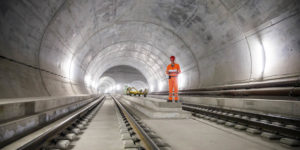Offshore wind power production will be a key element of a more sustainable future energy mix, and cement is fundamental to its delivery.
Wind power in the EU has developed into a major manufacturing sector, with production centres in nearly every Member State and installations providing 11% of Europe's electricity.
With limited space for on-land wind farms and fewer shallow coastal sites available for exploitation, moves to push wind production into deeper waters – with the help of cement – are vital to realising the EU’s energy policy and meeting the bloc’s Paris climate agreement targets.
There are already more than 4,000 offshore wind turbines in operation along the coastlines of 11 countries, representing 15.8 gigawatts of capacity. CEO of WindEurope Giles Dickson says: “Offshore wind is now a mainstream part of the power system.
“Investing in offshore wind today costs no more than in conventional power generation. It just shows Europe’s ready to embrace a much higher renewables target for 2030. Not least now that floating offshore wind farms are also coming online.”

(Photo via Région IDL)
Gravity foundation technology
For offshore wind to remain politically and economically viable, costs need to be minimised and output needs to increase. Expanding the size of turbines and moving them further out to sea allows for much more efficient energy output.
A key factor in supporting this transition to deeper water production is concrete gravity foundation technology. Gravity foundations are concrete shell structures that are floated onto the seabed before being weighed down with ballast. The simplicity of their construction and installation makes them an effective and easy to maintain engineering option for offshore wind farms.
In August 2017, the first of five mammoth gravity-based foundations for an offshore wind farm in British waters was installed near the coast of Northumberland, using the ‘float and submerge method’.
The concrete and steel gravity-based foundations were built in a dry dock and then floated down river to the Port of Tyne where extra ballast was added, before being towed by tug vessels offshore.
Sea water was then pumped into the foundations to lower them to the prepared sea bed, and once they were in the right position this was replaced by sand. The foundations were then ready to support the wind turbines. The construction flexibility of concrete – made possible by the unique qualities of cement – means that onshore manufacture of the foundation bases can be delivered to strict programme deadlines, thus reducing costly delays. Gravity foundations also offer the possibility of being re-floated and moved to a different site after installation.
“Offshore wind is now a mainstream part of the power system.”
Thanks to this technology, offshore wind can be delivered with minimal environmental impact. There is no need for piling operations into coastal sea beds, therefore reducing displacement of marine species and other knock-on effects. The carbon footprint of this tech also compares well with other materials – concrete produces 57% less carbon than a steel cover alternative.

Built on cement
Cement is a fundamental ingredient in concrete, providing the design and construction flexibility that makes it the ideal choice for construction and infrastructure projects across the globe.
Its proven long-term performance in marine environments has led to the construction of more than 300 concrete-built offshore wind installations across the world.
Concrete’s inherent durability means that there is a lower need for maintenance, combined with an increased service life. This enduring toughness also ensures the gravity foundations are protected against impact damage.
The Floatgen project
With France enjoying the second highest wind potential in Europe it is moving to adopt deeper water technology, and work is already underway on the country’s first turbine. The Floatgen project features a 36m-wide by 9.5m-high floating base built from pre-stressed, reinforced concrete.
The design is intended for installation in harsh weather and sea conditions, located 22km from shore at a depth of 33m. In addition to their material benefits, the floating concrete foundations have minimal physical impact, making it simpler to achieve planning permission in France, which requires thorough environmental impact assessments before any work can begin.
The Floatgen project estimates that 6GW of energy could be generated by floating wind turbines in France, by 2030. This is equivalent to three and a half modern nuclear power plants.

(Photo via Ideol - BYTP - ECN)
With over 80% of the world’s offshore wind energy resources located at depths of more than 60m, the drive to maximise the planet’s renewable energy sources will lean heavily on concrete gravity foundation technology.
Without the flexibility and strength of concrete, and the cement it relies upon, exploiting the full potential of wind power and ensuring a more sustainable energy future will be no more than a pipe dream.


